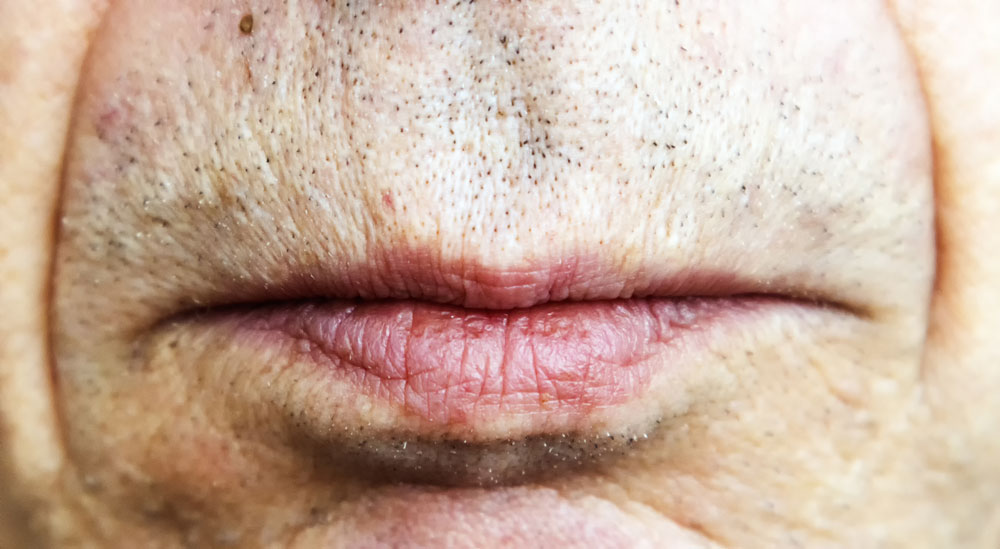The importance of continuous improvements for quality in care at the nursing home - Creating a safer and more efficient care environment
This article is written from a Swedish perspective. Hopefully, it can inspire those interested from other countries.
Healthcare quality is about patient safety and systematic quality work. The patient safety report is a foundation for planning the quality safety work. Many healthcare providers produce a more comprehensive quality and patient safety report. Self-monitoring, risk analysis, deviation management, internal audits, complaint handling, etc. are important parts of the work with continuous improvements in the business.
 Foto: Mostphotos
Foto: MostphotosManagement System
In healthcare services, the management system often contains a multitude of routines. There are several reasons for this, as healthcare is very complex. A nursing home is subject to regulations linked to the Social Services Act, the Health and Medical Services Act, food legislation, fire protection law, work environment legislation, labor law, environmental law and many more. The language used in routines must be understandable and the routines must be easily accessible to the staff when they seek guidance on how to carry out the work.
Almost always there are many ways to solve the same task, ways that can all be equally good. Finding a common way of working for the residence is an important task for management and all employees. If there is no connection between what is stated in the routine and what works in reality, the routine risks becoming a shelf warmer. There is then a risk that the residents will not receive the care they are entitled to.
Regulations place high demands on routine descriptions for important processes. Some companies compile more and more extensive routines than required. There is good support material to refer to for many processes. The Vårdhandboken, a national site that collects routines for all types of care tasks, contains descriptions of how many tasks should be carried out within healthcare. The material there is quality checked and updated annually by those responsible for the content.
It becomes difficult to work with quality development if the routines that exist do not correspond to how the business works in practice. In addition, it becomes difficult to follow up if a changed way of working has improved the quality of work. It is good to date and give a new version number to routines that change. Then you know which routine applies if there should be several versions in circulation.
All healthcare activities are obliged to have a management system and to plan, lead, control, follow up, evaluate and improve the business with the support of the management system. The work begins by identifying, describing and determining the processes that are necessary to ensure the quality of the business.
Thereafter, the processes are reviewed to see which activities are included and in which order they should be carried out. The management system should contain all the routines necessary for the business to be safe and secure for those receiving care and service there, but no more.
An example of a process and activities is when someone is going to move in. Residents and relatives come to look. You introduce yourselves and provide information about the accommodation. Information comes from the municipal social worker about the needs they have identified that the person moving in has. One of the colleagues is appointed to be the contact person and you have arrival talks with the resident. You start the work of drawing up an implementation plan and so on.
In order to create motivation and build a mindset that permeates the entire business, there must be a common picture of the quality that you want to achieve. Nursing homes are becoming increasingly competitive and scrutinized. Not delivering good quality can mean that the nursing home has empty places and deteriorating finances. In the long run, it could mean closure.
All businesses working with healthcare are obliged to work with systematic quality management work. Healthcare quality can only be achieved when healthcare is provided based on science and proven experience. Working with systematic quality improvement work means working with continuous improvements. In order for us to know that things are getting better, basic conditions are required. Tom Johnstone, former CEO of Svenska Kullagerfabriken (SKF), describes improvement work as an evolution where all changes must build on the improvement work that has taken place before.
First we need to know what we do. For that, there need to be written routines for the most critical parts of processes and activities included in the business. Then we need to measure the effect of what we do, so that we know if the business is getting better. In addition, we should constantly think about how we can do things better. National quality registers such as Senior Alert, Palliative Registry and BPSD Register are examples of support in development work. Active work with registration and analysis contributes to change and improvement work as well as to learning and development of the businesses.
In order to be able to compare the business over time and with other businesses, key figures are often used. Activation and outdoor stays are such elements that should be documented. On some units, participation is signed. Other key figures can be complaints, number of people with underweight, occurrence of pressure ulcers, use of antibiotics and more.
Annual wheel for quality
It is good to have an annual wheel for quality work, so that the business feels confident that all routines are updated and reviewed and that the routines correspond to how the employees work. Poor compliance with routines is a major risk in the business. If the employees are allowed to shortcut routines, they are also left to assess what is important or less important in the business. If there are routines that the management does not consider important to follow, they should be removed.
An important part of the work with healthcare quality is environmental monitoring. The business must know what happens when it comes to legislation. In addition, it is important to keep track of scientific developments, so that the business lives up to what is science and proven business.
Knowledge development is fast and what applied five years ago is not the whole truth today. Private and to some extent municipal care is exposed to competition. Our elderly and their relatives are becoming increasingly aware of differences in quality between nursing homes. They also become more informed and shortcomings in the business risk reducing confidence.
Changes do not come by writing a paper and distributing it to employees. For a change to be implemented, everyone must understand why the change needs to be made. Many work on autopilot when it comes to routine tasks. To break an ingrained routine, reminders may be needed. It is therefore important not to implement many changes at the same time. It's hard to remember new ways of working if the change work goes too fast and easy to fall back to the old and familiar ways of working.
The routines for handling deviations, viewpoints, complaints, incidents and suggestions for improvement are another essential part in the work of identifying quality deficiencies. A culture where quality development is a natural part is created by thoroughly investigating events, taking measures to prevent an event from happening again and communicating and following up the quality work so that everyone knows.
Opinions and complaints are a source of knowledge about shortcomings in the business. The same applies to deviation reports that employees write. A deviation report is a report on a deviating event. It is important that it is the event itself that is described because the purpose is to learn together and do better. Not to find scapegoats.
Having a good process with these where the business seriously seeks better ways of working and implements changes means that the risks decrease while care and care improve. By learning from negative events to improve, we remove the grit in the machinery. Those who submit deviation reports, complaints and suggestions should receive feedback on how the report has been handled in the business.
Self-monitoring
Self-monitoring is a fundamental part of the work to constantly improve the business. Self-monitoring programs mean recurring reviews of different quality areas so that quality deficiencies can be detected before any damage has occurred.
Many businesses have quality ombudsmen and internal auditors who contribute to seeing that the routines work as intended and that the employees follow these. One way to evaluate your business is to collaborate with another residence. Self-monitoring can then be carried out at another residence when someone comes from outside and reviews the business. They can benefit from and learn from each other while a review with other eyes can provide new perspectives. The management should review the management system annually to see what works and what needs to be developed.
One way to be sure that a task has been carried out is to have signing lists, for example when employees help the individual with medication management. Sometimes self-monitoring is done digitally. Checking food handling is an area that often requires signing lists. Likewise, fire protection rounds and safety rounds can be part of self-monitoring. Many businesses do regular journal reviews.
Checklists are another way to work with self-monitoring. Most businesses have quality reviews of medication management, hygiene rounds and supervision of the medically responsible nurse. The Environmental Office must regularly supervise food handling. In addition, certified residences have an annual business audit.
Every year, the business is obliged to prepare a patient safety story. It should be made available to anyone who wishes. All you have to do is ask the manager to take part in it. This applies regardless of whether the business is in public or private operation. For larger care providers, it often happens at the management level. Many businesses have broadened the patient safety story to also be a quality and business story. One of the most important perspectives when looking back on the past year is to plan the quality work for the coming year.
The importance of continuous improvements in nursing homes to create quality in care
Continuous improvements are a crucial factor in ensuring and improving the quality of care in nursing homes. By actively working to identify and implement areas of improvement, the nursing home can create a safer and more efficient care environment for the residents.
Continuous improvements as part of quality work
Working with continuous improvements means continuously evaluating and improving the business to meet the residents' needs and expectations in the best possible way. It is about systematically identifying areas of improvement, designing and implementing improvement measures and following up and evaluating the effects of the changes. By integrating continuous improvements as a natural part of the quality work, the nursing home can ensure a high and continuous standard in care.
By actively working with continuous improvements, the nursing home can achieve a range of benefits for both the residents and the staff. This includes:
Improved care quality: By continuously evaluating and improving care processes and routines, the nursing home can ensure a high standard in care and thereby improve the residents' health and well-being.
Increased efficiency: By eliminating unnecessary and inefficient work moments, the nursing home can increase its productivity and thereby free up resources that can be used to improve care quality or develop the business.
Strengthened work environment and employee engagement: By involving staff in the work with continuous improvements, the nursing home can create a positive work environment characterized by commitment, participation and learning, which in turn can increase satisfaction and motivation among employees.
Implementation of continuous improvements
To successfully implement continuous improvements in the nursing home, a clear structure and methodology for improvement work is required. This may include establishing improvement teams, using methods such as Lean or Six Sigma, as well as regularly evaluating and following up the results of the improvement measures. By having a systematic and structured approach, the nursing home can ensure that the improvement efforts are sustainable and yield desired effects over time.
Reflection - vision for quality work
Care staff:
• Do you have functioning quality work at your residence?
• Are deviations handled well?
• Are you involved in quality development in the unit?
Manager, nurse, occupational therapist and physiotherapist:
• Does the work with continuous improvements work?
• Do you have any residence to collaborate with or that you could collaborate with when it comes to quality development?
• Are the routines known and working?
Residents and relatives:
• Do you experience that there is improvement work going on in the unit?
• How are you engaged in improvement work?
• Do all employees work according to the same routines?
Erland Olsson
Specialist nurse
Sofrosyne
Better care every day
Aktuellt i media
- 2024-04-18 04:00 10 Aktivitet o funktionsbevarande arbetssätt
-
2024-04-15 04:00
09 Mat och måltid
Food and fall prevention. How the nursing home ensures a safe and nutritious food handling.
info Foto: Mostphotos
Foto: Mostphotos - 2024-04-11 04:00 05 Planering
- 2024-04-08 04:00 10 Aktivitet o funktionsbevarande arbetssätt
- 2024-04-04 04:00 11 MTP
- 2024-04-02 04:00 12 Personlig omvårdnad






